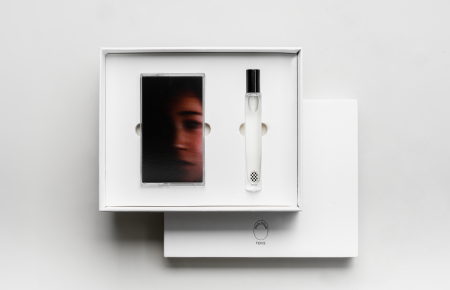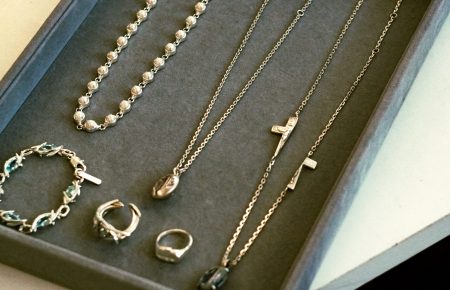If you ever wondered just how much of yourself you could give to someone else, that answer would be 8 organs that include the heart, lungs, kidneys and liver, and 73 tissues that include the cornea, skin, blood vessels and bone marrow.
Totaled up, they represent 83 possible futures a single person could save; futures that technically, you could save. 83 Futures partners with Donate Life America to encourage more people to register as organ donors.
We had a chance to briefly chat with Jonathan Richman and Alex Zamiar of 83 Futures, who shared some insights on the project and its impact.

“That’s a level of exclusivity we want to establish. This whole world is about limited and exclusive and in this case, you have to be willing to give a piece of yourself — quite literally — and save another person’s life in order to get this stuff. That exclusivity fits right into the culture but’s another level beyond a raffle or an auction or a sneakers app drop.
— Jonathan Richman


With just over 54% of people registered to donate in the United States against 95% who support donation, 83 Futures is both a brand and innovative solution to closing that gap to help people take those last few steps and walk away with more than just cool drops.
The ask is fairly simple: sign up to give something precious, to get something precious.
So precious in fact, the company motto “so exclusive we need your organs for access” is accurate in several ways. For one, you need to actually register as an organ donor before you can even see the collaborations produced between brands partnered with the initiative.
“That’s a level of exclusivity we want to establish. This whole world is about limited and exclusive and in this case, you have to be willing to give a piece of yourself — quite literally — and save another person’s life in order to get this stuff,” Richman tells us. “That exclusivity fits right into the culture but’s another level beyond a raffle or an auction or a sneakers app drop.”


“It’s not something they think about. When you’re young, you think you’re invincible and you never think you’re going to have a medical problem. You don’t think about other people have medical problems. And in major cities, the registrations are low among African American and Hispanic people, but the need in those groups is high. So there’s a really bad imbalance.”
— Jonathan Richman, on the particular need for donors from multicultural communities.
These include names across multiple product categories and creative disciplines from Die Happy Clothing to eyewear brand A-morir to footwear developer GRXN and LA-based artist and tattooist Nathan Kostechko.
They represent just a few on a growing list of partners that have previously included The Hundreds, Diamond Supply and Staple to incentivize would-be organ donors, especially those from multicultural societies, members of which make up over half of the people on the waiting list — one that sadly grows and shrinks on the daily.
In the United States, there are 114,000 patients on the national transplant waiting list for the organs and tissues they desperately need and every 10 minutes, another person joins that list. But with transplants in short supply, 20 will pass away each day.



“I think success in terms of organ donation is that it becomes second nature to register in the same way that you put your seatbelt on in the car. We had to teach society that wearing a seatbelt is something that you do.”
— Alex Zamiar, on the cultural goal for increasing organ donorship.
The brand made its big debut at ComplexCon Chicago earlier this year, the first time the increasingly iconic streetwear and culture event was hosted away from its home turf in Long Beach, California.
There, 83 Futures did more than just secure 15,853 potential futures with an influx of new donors, it started a conversation that was a long-time coming: not just on the importance of organ donorship but also perhaps the culture the brand is speaking to.
Its tongue-in-cheek brand messaging is as much a playful take on streetwear’s love for exclusivity as it is a call to rethink the moral dynamic slightly. After all, sneakerheads and other like-minded consumers are willing to camp out on the street overnight for drops — some jockeying for that chance to be “one of the first.” Why can’t that drive be harnessed for good?
“We’re willing to wait as a society overnight to get some Supreme drop or get in line for a raffle for some Off-Whites or an iPhone, and they make millions of iPhones,” says Zamiar who goes on to say, “There’s that badge of honor, that first week ‘I waited in line for this iPhone and I was the first person in New York to have it.’ And that guy gets interviewed. This is tapping into that, just in a do-good way.”
It’s the same kind of pragmatic but impactful approach that’s helped boost Donate Life’s reach and its numbers. In one of its previous video campaigns called “The World’s Biggest Asshole,” we see the titular character played by actor Thomas Jane going about his life committing all manner of bad deeds and likely being hated by the audience until the inevitable happens — at which point we find out his one redeeming quality (Spoiler Alert: he was a registered organ donor).


In an age where brands and organizations including charities are competing for media attention, Richman and Zamiar knew early on that the traditional approach of the statistic-laden PSA would likely fall on deaf ears, which is what makes its approach to product so simple yet familiar to the audience it’s trying to reach.
It makes for a perfect fit: it doesn’t feel overtly like you’re giving to charity, though the self-fulfilling slogans commonly printed on many items remind both you and everyone else of your commitment.
It’s a new level of cred you can’t match by just showing up early and waiting it out or simply have deeper than others pockets to buy off of a marketplace like Grailed or Goat. The prevalence of product and the means to acquire them has changed its value in many ways. Its commoditization serves the purpose of showing off not necessarily taste but affluence and to a lesser degree, access.
There is an alternative world 83 Futures is planning for. It’s the future that the founders envision where a wearer walks down the street in a pair of 83 Futures sneakers and is complimented on them by a stranger, to which the wearer replies proudly and factually: ‘I had to become an organ donor to get these.’
On that note, if you’d like to register as an organ donor (and of course, gain access to 83 Future’s super exclusive collabs), head over to their website here.





























